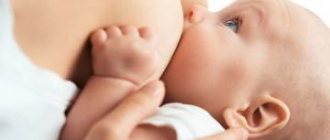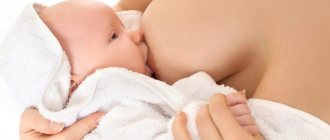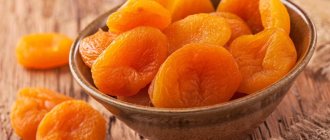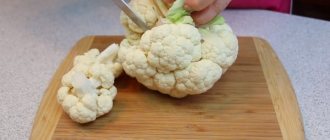Nipple shields are steadily gaining popularity among breastfeeding women. Simplicity and reliability, combined with an affordable price, make them one of the most popular products for mothers. Below are answers to the most frequently asked questions about nipple shields for feeding, and an overview of the most well-known manufacturers.
What are they for?
Breast and nipple shields are special devices for protecting the nipples and areola (the pigmented area around the nipple) from damage or treating existing injuries (scratches, cracks, bites, etc.). That is, their main function is to protect the mammary gland during breastfeeding (BF) of the baby. In addition, they are used to:
- shape a flat or inverted nipple;
- facilitate the child's nutrition;
- make the process of expressing milk easier and faster;
- accustom the baby to suck the breast when refusing it;
- protect clothes from contamination with milk;
- protect delicate fabrics from friction against clothing and from cold.
What are breastfeeding shields
Many women resort to using breastfeeding pads without thinking about how this will affect the health and well-being of their baby. Nevertheless, there are many contraindications to their use, which every young mother should be aware of.
A breastfeeding pad is a product that is an attachment that follows the shape of the breast nipple and areola with holes at the end. The pads are intended for feeding infants in cases where the mother, for physiological or other reasons, is not able to breastfeed in the usual way.
Types and sizes
The first devices appeared in the 17th century and were gradually improved until the beginning of the 20th century. Previously, linings were made from:
- silver;
- lead (caused toxic damage to the baby’s nervous system);
- wax;
- wood;
- rubber;
- tin and its alloys;
- horns;
- bones;
- Ivory;
- glass;
- rubber.
Interesting! The first rubber breast pads appeared in the mid-19th century. In Britain.
Today you can only buy pads made of rubber, silicone, latex. The former are difficult to find and are not recommended for use, even in extreme circumstances. The design of the rubber devices allows you to attach regular bottle nipples to a special base made of glass or plastic. With proper attachment, the baby is 1.5-6 cm from the edge of the nipple, due to which the position of the baby at the mammary gland greatly changes.
When using rubber pads, the subareolar milk sinuses do not contract, the skin of the nipple and areola is not directly stimulated by the baby’s skin, which disrupts the release and concentration of the hormone responsible for the secretion of milk (lactotropic, lactotropin, prolactin) in the mother’s blood plasma. In addition, during feeding, milk often accumulates at the base of the skin folds, leaks to the sides, and a smaller amount ends up in the baby’s oral cavity.
Products made of silicone and latex are thin and flexible plates, compacted in the projection of the nipple. Due to the thinness of the material used, the surface of the areola is fully stimulated during sucking, milk loss is minimized, and the physiological (natural, normal) cycle of prolactin release into the blood and its accumulation in the plasma is maintained. Silicone overlays are a higher priority because the rate of allergic reactions to latex is increasing.
The dimensions depend on the diameter of the erect nipple and the manufacturer (although they try to unify the sizes of the pads, this cannot be completely achieved). Therefore, the selection of silicone or latex breast pads for feeding a baby is carried out individually. The following sizes are available:
- S – nipple diameter at tension less than 1 cm (recommended for feeding a premature baby);
- M – nipple with a diameter of 1-1.5 cm;
- L – nipple diameter greater than 1.6-2.0 cm;
- XL – more than 2.0 cm;
- universal.
Attention! Although there are products of universal size, it is recommended to buy products strictly according to the size of the erect nipple.
Advantages and disadvantages
Pros of silicone and latex nipple covers:
- teach the child to suck the breast correctly (when the baby did not have the opportunity to suck the breast for a long time after birth);
- make it possible to supplement the baby's breastfeeding (they use a tube from the supplementary feeding system when the baby refuses to latch on to the breast);
- stretch and maintain the elongated shape of a non-standard nipple when the child pauses between sucks;
- protects the mammary gland from injury by a child (for example, if he refuses to feed);
- are able to increase stimulation of the nipple during sucking if the child does it sluggishly.
Despite all the advantages, overlays have their disadvantages:
- spontaneously used by mothers as a way to solve a medical problem, instead of qualified consultation and assistance from a doctor;
- lead to postponing the solution to the problem in a “long box”;
- exacerbate the original problem;
- can disrupt lactation by inadequate milk secretion (production per suckling is reduced by more than 50%), impaired weight gain of the child;
- provoke too early cessation of lactation;
- disrupt the configuration of the nipple in the baby’s mouth during feeding (the normal shape is a widened nipple at the base);
- reduce the production of the hormone oxytocin while feeding the baby;
- make it difficult to express milk;
- lead to disruption of the sucking mechanism. The baby suckles quickly and intensely, which leads to long pauses. A similar sucking mechanism is observed during the decline of lactation and, over time, reduces the production of milk by the gland;
- if used incorrectly, they can compress the areola and nipple, which causes abrasions, pain, damage to the skin and internal tissues of the mammary gland;
- the use of pads increases the duration of feeding;
- exhaust the child. The baby gets tired from prolonged sucking and falls asleep half-starved;
- milk may leak under the pad due to which the baby does not get enough to eat;
- the child develops an addiction to the pad, which is why he may refuse to breastfeed without devices;
- during sucking, air is swallowed more often - the child may develop flatulence, colic, and frequent regurgitation;
- after refusing to use pads, the likelihood of damage to the mammary gland when the baby is applied to it increases significantly, since he may not suck the gland, but begin to chew it;
- the devices are inconvenient to use at night or while walking;
- an insufficiently sterilized pad is a source of infection;
- use increases the risk of developing candidiasis (fungal infection) of the breast.
Cons of breastfeeding pads
Overlays have many disadvantages:
- inconvenience of feeding at night and while walking outside;
- the sucking mechanism is disrupted - the baby sucks more intensely and faster, which is typical for the phase of fading lactation;
- milk production decreases;
- feeding takes longer;
- if sterilization is insufficient, they can become a source of infection;
- the child swallows air, which leads to colic and flatulence.
Important to remember! You should resort to using breastfeeding pads only in the most extreme cases, for example, in case of painful cracks through which infection can penetrate - as a result, the breasts become inflamed and feeding turns into real torture.
How to choose
Instructions for choosing a device for natural feeding of a baby:
- Sizing. To do this, it is better to choose products from different manufacturing companies and try them on.
- It is important that the nipple is tense during fitting.
- For premature babies, small devices will most likely be suitable, but it is still better to try them on.
- The pad should not cause a feeling of squeezing, discomfort, or irritate the skin.
- The device should be easy to put on and follow the shape of the nipple. Its front surface should not fit too tightly to the product, since normally this occurs only after the child begins to suck the gland. In this case, the nipple comes into contact with the holes of the cover.
- It is recommended to keep the device on the mammary gland for the approximate feeding time of the baby. If there are no unpleasant sensations, the product was chosen correctly.
Attention! It is recommended to give preference to products made from silicone, since they are hypoallergenic, do not change color over time, have no odor and do not acquire it, and are wear-resistant.
How to choose a nursing pad?
- Size. When choosing overlays, it is very important to choose the right size. If possible, it is better to buy products from several manufacturers and try them on. If the baby is premature, it is better to buy the smallest size shields, but they must also fit the nipple. The shields should be shaped to fit the base of the nipple. Also, the nipple should not reach the top of the shield - when the baby starts to suckle, the nipple will increase in size. If the nipple does not occupy the entire cavity of the pad and does not come into contact with the holes during feeding, then the product is too large. If there is a feeling of compression, then the pad is small. A nipple that is too high may cause the baby to choke.
- Material. It is recommended to give preference to silicone rather than latex products - they are thinner, more durable and do not cause allergies.
- Quality. Good, high-quality linings must have a quality certificate. It is strongly recommended that you avoid purchasing products that have an unpleasant odor.
- Number of holes. The more there are, the more milk the baby will receive in a certain period of time. The size of the holes also matters. But a small child can choke when there is a large flow of milk.
Important to remember! During fitting, the nipple should be in an excited state. When applied to the breast, the nipple shield should not reach the top of the nipple.
How to wear and use
The instructions for use are as follows:
- Sterilization is required before the 1st use.
- The nipple should be in an erect state.
- The pad is turned out, applied to the nipple and wrapped back to the gland, i.e. so that the device fits tightly to the shape of the gland.
- To make it easier to put on, it is recommended to moisten the pad a little (so it fits more tightly).
- Babies may be afraid to breastfeed with a breast shield. To make the child want to suck on such a breast, it is recommended to lubricate the product a little with milk.
- The cutout on the device must be at the top, because that’s where the baby’s nose is located.
- The baby should suckle at the breast with the breast shield in the same way as without it - the mouth is open wide, the area of the breast above the areola is wrapped around the lips.
- Remove the device gradually, without effort or sudden movements.
- After each feeding, the product must be sterilized, otherwise it becomes a source of infection.
How to care
Care is similar to caring for a pacifier; the cover must be kept clean at all times, otherwise the child may become infected with an infectious disease. It is not recommended to frequently boil products made of silicone or latex, as this makes the material harder. After purchase, before the 1st use, the product must be sterilized by boiling. After each feeding, you need to wash the device with warm water and soap and dry it. The pads are boiled periodically - once every 2-3 days for 3-5 minutes.
An alternative to boiling is steam sterilization. If you have a steam sterilizer, it is advisable to avoid boiling altogether, because steam is gentle on the material, so it retains its softness longer. You can sterilize the product using steam every day for 5-8 minutes.
Attention! If the color of the product changes, cracks, tears, holes, or an unpleasant odor appear on it, its use must be stopped.
What are nipple shields
Shields are special products made of silicone or latex that are attached to the nipples and help make breastfeeding easier for the baby. They also serve as a kind of protective barrier between the delicate skin and the baby’s mouth to reduce pain during sucking. They are shaped like a nipple with several holes through which milk enters the baby's mouth. But extracting nutritional fluid through the pads is not as easy as from a bottle, so the baby makes the same efforts as when sucking without pads.
Experts warn that it is not recommended to constantly use pads. This can lead to problems with breastfeeding.
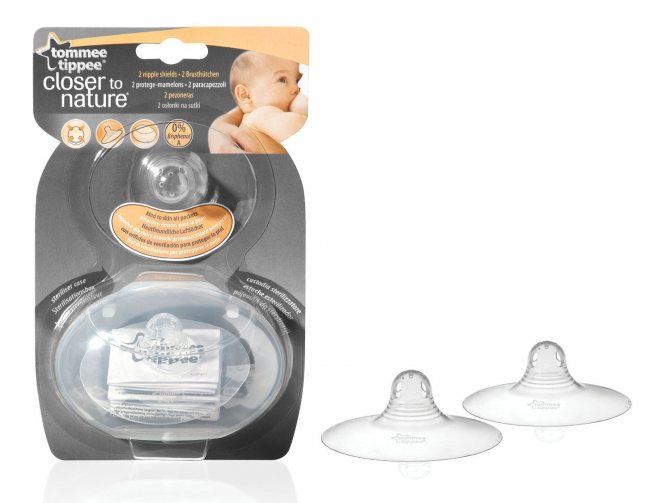
Experts do not recommend using nipple shields unless necessary.
Types of overlays
If previously women had a relatively small selection of personal care products and accessories to help in a given situation, today there is a huge variety of products on the shelves of children's goods stores and pharmacies. The same goes for nipple covers. Manufacturers use different materials for manufacturing. This is the main difference between accessories from each other:
- rubber. Today they are practically not on sale. Such models are a nipple (similar to the one we are used to seeing on feeding bottles). It is attached to a plastic or glass base and then placed on the chest. As a result, there remains a distance of about 2.5 cm between the mother’s nipple and the baby’s mouth. This is why the nipple is not sufficiently stimulated and the baby does not receive the required volume of nutritional fluid. Another disadvantage is that milk leaks and accumulates under the pad. This is inconvenient during feeding;
- latex. These models can be bought at a pharmacy or ordered through an online store. But most manufacturers also refuse to produce them. The linings made from this material are soft and have a yellow tint. But the main disadvantages are that they absorb odors, quickly become unusable, and can cause allergic reactions in a baby;
- silicone. Today, silicone linings are the safest and most wear-resistant. They are transparent models, flexible, tightly fitting to the skin of the chest. Products made from this material do not cause allergies or irritation in infants, and do not emit an unpleasant odor when used.
Photo gallery: types of nipple covers depending on the material of manufacture
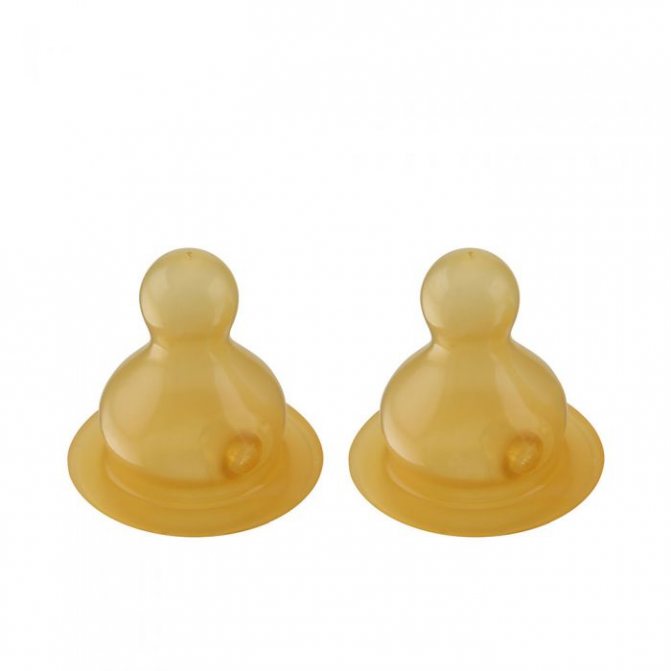
Rubber pads are practically not used today and have been discontinued by many brands.
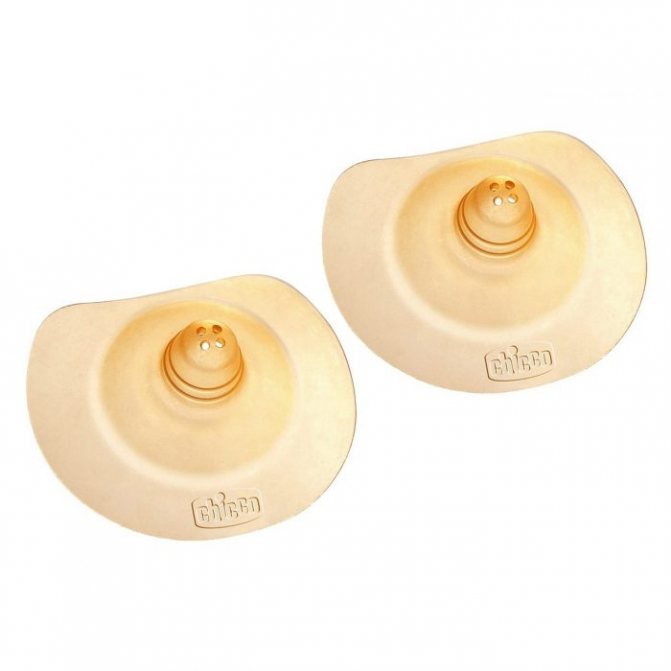
Latex pads can cause irritation in your baby

Silicone pads are the safest and most affordable today
How to refuse use
The technique for stopping the use of pads is no less important than the technique for selecting and applying them. The correct way to do it is:
- You need to start feeding the baby with a pad, but then, during a break in sucking, it needs to be quickly removed. Hungry babies often do not notice the lack of adaptation and calmly continue to suckle;
- It is recommended to offer the unprotected breast to a sleepy child. The most convenient time to return to full natural feeding is considered to be the time of night sleep and the first minutes after waking up. The likelihood of a baby accepting an unprotected nipple is much higher during sleep;
- It is advised to reduce the area of contact between the product material and the child’s skin. To do this, you need to cut off a small piece from the lining every day. This achieves an increase in the area of contact between the child’s skin and the mother’s and a decrease in the area of contact with the material of the device. Over time, you can completely abandon the polymer material;
- When the baby gets too used to the breast shield and does not latch on without it, you need to be patient. Returning to regular breastfeeding in this case takes several weeks. To reduce the time of weaning from pads, it is recommended to have contact with the child as often as possible, carry him in your arms, and sleep with him. Having constant contact with the mother and constant accessibility of the mammary gland allows the baby to get used to the breast much faster;
- it is necessary to remove all “simulators” of the mammary gland. It is necessary to refuse or hide everything that the baby can suck, including nipples. Over time, the need to realize the sucking reflex will force the baby to return to the normal breast;
- It is recommended to supplement the baby with expressed milk. When a child does not want to suckle the breast and cries near it, he is fed from a spoon, pipette or cup. Before and after such feeding, the baby is asked to suck on the mammary gland.
Attention! The less used the products, the easier it is to give them up, both for the child and the mother.
Brands
There are many breast pad manufacturing companies on the market. The most popular brands of products for nursing mothers are presented.
Ardo
Devices for hot water are made of silicone. The package contains 2 thin transparent products, which may raise doubts about their density. But this is not so - the devices are highly resistant to damage and wear. The product is available in all sizes. Product price – 800-1100 rub.
BabyOno
Protective products are made of thin and soft silicone, have an anatomical shape, and correspond to the size of the mammary gland. The product does not contain toxic Bisphenol and does not change the taste characteristics of milk or its smell. The package contains 2 pads. It is possible to choose any of the existing sizes. Price – 300-600 rub.
Camera
The product is made of soft silicone material that does not cause allergic reactions. Covers not only protect the mammary glands from damage, have a beneficial effect on the healing process of the nipples and areolas, but also enhance tactile stimulation of the nipple. Camera's product is tasteless and odorless, and therefore cannot change the taste of mother's milk. Products are presented in sizes from S to XL. Cost – 230-510 rub.
Canpol Babies
The products are made of soft silicone, which allows them to reliably protect the nipple during breastfeeding and not disrupt the contact between mother and baby. The product has no taste or smell and cannot affect the taste of milk or the baby's taste sensations when feeding. The devices can be used from the 1st day after birth. The products are hypoallergenic. They are available in all standard sizes. The package contains 2 silicone products, a case for their transportation and storage. Price – 300-600 rub.
Chicco
Also made of high quality silicone, they are distinguished by their anatomical shape and thinness. They fit tightly to the nipple and do not interfere with the movement of milk in the breast. They do not change the physiological location of the nipple in the baby’s mouth and minimize milk loss. The product is available in sizes S–XL. Easy to sterilize. Cost – 500-900 rub.
Farlin
Silicone products from Farlin make breastfeeding easier and safer because... provide reliable protection against damage and cracks. At the same time, there is no decrease in milk production. The product is hypoallergenic. Thanks to the optimal design of the holes, milk flows evenly into the baby's mouth. The anatomical shape of the products guarantees maximum contact area between the skin of the child and the mother. Products are available in all sizes. The package contains 2 silicone pads. Made in Taiwan. They cost 250-400 rubles.
Happy Baby
The product is made of the highest quality silicone, packaged in a case for better transportation and storage. The shield is used to facilitate breastfeeding, minimize problems that arise during the formation of lactation, prevent trauma to the nipples, and give them an optimal shape. The product has an anatomical configuration, the material is as thin and elastic as possible, all this ensures close contact between the nursing mother and the child. Price – 300-500 rub.
Medela
Medela breast pads are made from thin, flexible silicone that is tasteless and odorless. The special shape of the devices does not disrupt skin contacts during feeding and allows for increased tactile stimulation of the nipple. Cost – 700-1000 rub. The product is presented in the following sizes:
- S – intended for feeding premature infants, the diameter of the nipple in a tense state does not reach 1 cm;
- M – nipple diameter during tension corresponds to 1 cm;
- L – tense nipple more than 1 cm in diameter.
NUK
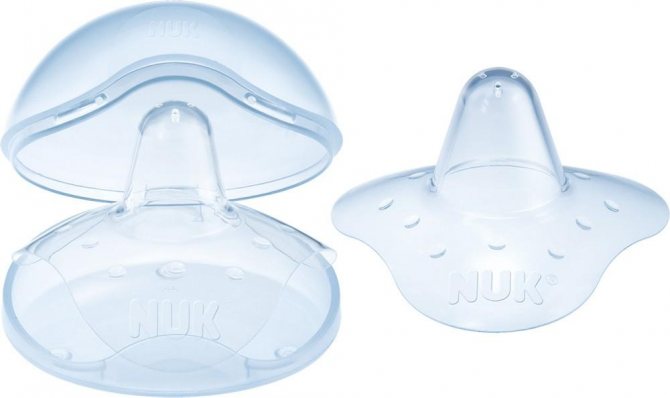
Products made of thin medical silicone are designed to reliably protect the breast from damage that may occur during breastfeeding. The pads have a convenient shape in the form of triangles, 3 holes for milk drainage. They allow you to gently massage the nipple, achieving an increase in the secretion of its secretion. The package contains 2 products. The package includes a special container for storage and transportation. The product is available in all sizes. Cost – 300-530 rubles.
Philips AVENT

Avent breast pads are made of very thin medical silicone of the highest quality, which is hypoallergenic and has neither taste nor smell, and does not change the taste of mammary gland secretions. During feeding, the child feels the mother's warmth, his tactile perception is not impaired. The product is available in small and standard guards. Costs - 600-1000 rubles.
Pigeon
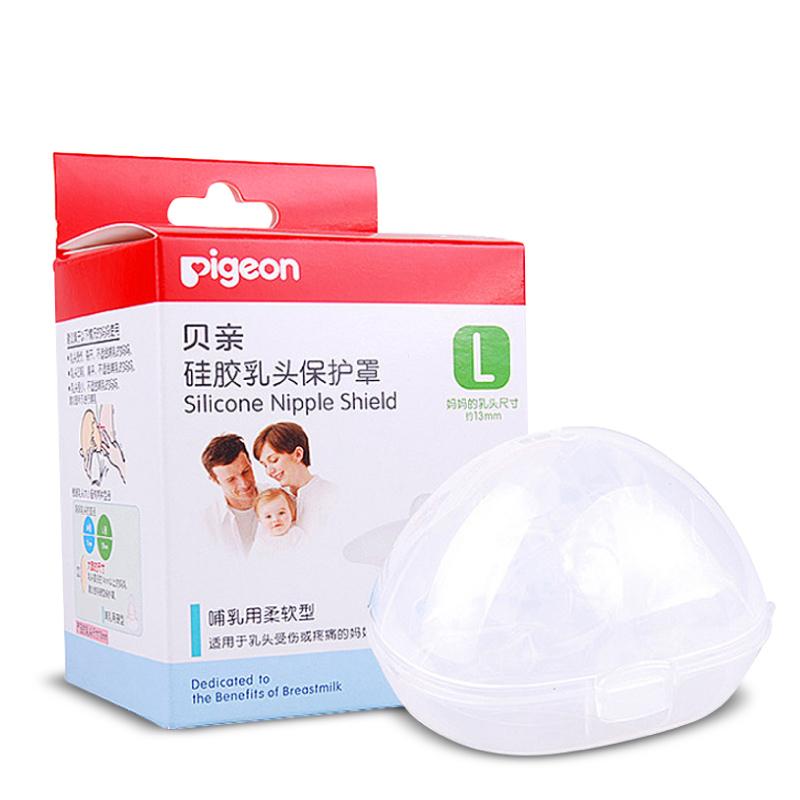
Products for full breastfeeding of a baby from the Pigeon company provide the opportunity to feed a baby even with an injured nipple, because they fit snugly and protect it reliably. In addition, it prevents contamination of breast milk. Products are recommended for trauma, cracks, flat or inverted nipples.
The pads are made of very thin, soft, elastic medical silicone, which ensures light and comfortable breastfeeding. Thanks to the curved shape of the product, the baby's contact with the mother's skin improves. The holes in the product are made in such a way that they exactly repeat the shape of a female nipple. The package contains 2 devices and a container for keeping products clean and for convenient transportation. Manufactured in all sizes. Cost – 490-630 rubles.
The world of childhood
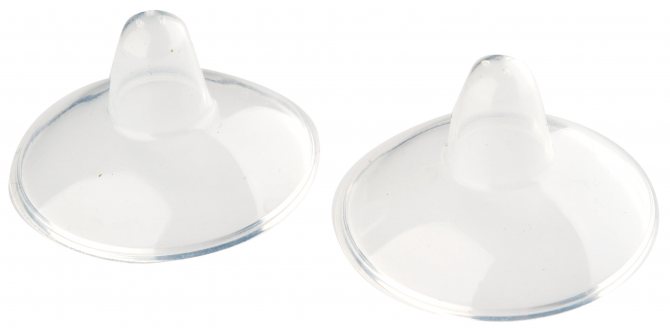
Protective pads for the mammary gland are used to protect sensitive skin from damage and bites. Products minimize the likelihood of damage or irritation. Thanks to the anatomical shape, the pads fit optimally to the mammary gland. 3 holes ensure smooth flow of milk during feeding. There are 2 products in a blister pack. Cost – 130-310 rub.
Where can I buy
You can buy breast and nipple protection pads in online stores, specialized stores of children's goods or products for nursing mothers. But the preferred option is to purchase breast pads from a pharmacy.
Attention! You need to choose a product strictly according to the size of the mammary gland.
Breast shields prevent damage to the breast during feeding and make breastfeeding easier, but they also have a number of disadvantages. Therefore, they must be used in accordance with the indications. A prerequisite for use is regular sterilization of products. You can purchase overlays on the Internet, specialty stores, and pharmacies.
What are breast pads: types
The main difference between existing breast pads is the material from which they are made. Based on this parameter, we can distinguish rubber, silicone and latex types of devices. The first ones are considered the most inconvenient, they are very rarely used, as they allow milk to accumulate and leak.

Latex and silicone options are the most successful due to the characteristics of these materials. Thus, silicone models can be as thin as possible, which gives them a lot of advantages, in particular:
- milk volume is not reduced;
- silicone is completely hypoallergenic, which cannot be said about latex, which may well provoke an allergic reaction in both mother and baby;
- thinness ensures maximum fit to the chest.
The overlays can also be different in shape: round, rectangular, irregular in shape. It is the non-standard options with a cutout for the nose at the top that are considered the best, since they do not protect the child from olfactory and physical contact with the mother.
